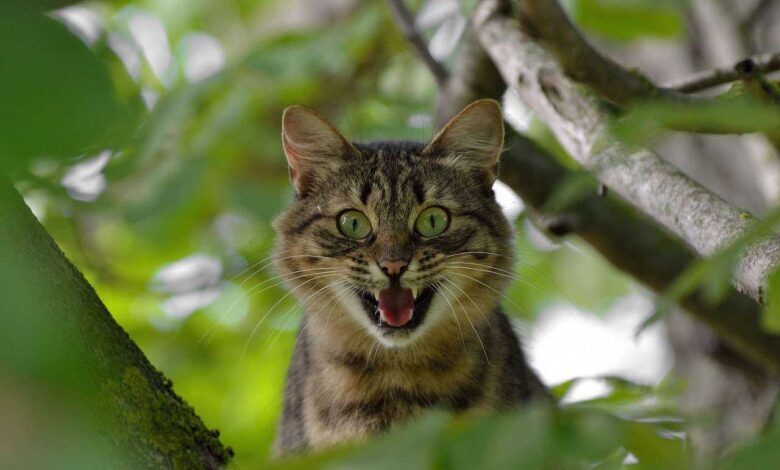
Welcome to our comprehensive guide on dealing with territorial behavior, marking, and aggression in cats. Cats, known for their independent nature, can sometimes exhibit behaviors that may seem challenging to their owners. Understanding the root causes of these behaviors and employing effective management strategies can lead to a harmonious living environment for both you and your feline friend. In this guide, we’ll delve into the world of feline territorial instincts and provide actionable tips to address these issues.
Understanding Territorial Behavior in Cats
1. What Is Territorial Behavior in Cats?
Territorial behavior in cats is an instinctual drive that revolves around the concept of defending and maintaining a specific territory. In the wild, this territory encompasses their hunting and feeding grounds. In our homes, this translates to defending a particular space or claiming ownership over objects within it.
2. Signs of Territorial Behavior
Recognizing the signs of territorial behavior is crucial for addressing the issue effectively:
- Marking: Cats may mark their territory with urine, feces, or scent glands located on their cheeks and paws. Marking can occur on vertical surfaces, such as walls or furniture.
- Aggression: Territorial aggression is often directed toward other cats or pets in the household. This can manifest as hissing, growling, swatting, or even physical fights.
- Protectiveness: Cats might become overly protective of specific areas, such as their favorite spots or feeding areas. They may exhibit defensive behaviors when approached.
Managing Territorial Behavior and Marking
1. Spaying or Neutering
Unneutered male cats are more prone to territorial marking. Spaying or neutering your cat can significantly reduce marking behaviors. It’s essential to consult with your veterinarian to discuss the appropriate age for the procedure.
2. Provide Multiple Resources
To prevent resource-related territorial aggression, ensure your cat has access to multiple resources like food and water bowls, litter boxes, and resting spots. Cats may become aggressive when they feel they need to protect these resources.
3. Clean and Neutralize Marking Spots
Thoroughly clean and neutralize marked areas using enzymatic cleaners. This helps eliminate the scent, making it less likely for your cat to re-mark the same spot. Consistency in cleaning is essential.
4. Use Feliway or Pheromone Diffusers
Feliway is a synthetic feline facial pheromone that can help reduce stress and territorial behaviors. Plug-in diffusers or sprays can create a calming environment in your home, reducing the likelihood of territorial marking.
Addressing Cat Aggression
1. Consult a Veterinarian
If your cat’s aggression seems sudden or unmanageable, consult your veterinarian. Medical issues, pain, or discomfort can trigger aggression, and a thorough check-up is essential. Rule out any underlying health concerns before addressing behavioral issues.
2. Gradual Introductions
When introducing new cats or pets into the household, do so gradually. Allow them to get used to each other’s scents and gradually increase their interactions under supervision. Positive associations formed during these interactions can help reduce territorial aggression.
3. Positive Reinforcement
Reward your cat for calm and non-aggressive behavior. Positive reinforcement can help encourage good behavior and reduce aggressive tendencies. Use treats, praise, and affection to reward your cat when they display appropriate behavior.
Conclusion
Managing territorial behavior, marking, and aggression in cats requires patience, empathy, and consistent effort. Cats are complex creatures with unique personalities, and addressing behavioral issues should be approached with care. By following these tips and seeking guidance from a veterinarian or professional animal behaviorist when needed, you can create a peaceful and happy home for both you and your feline companion. Remember that a loving and understanding approach is key to helping your cat overcome territorial behavior challenges.








